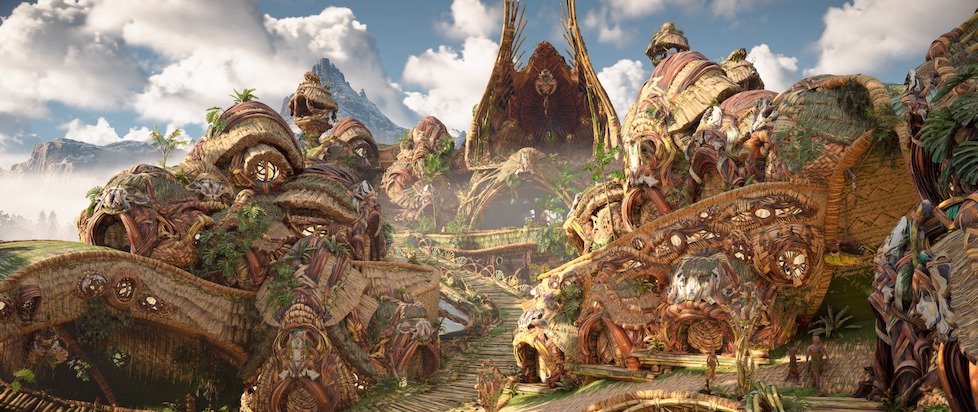
The First City

This column is a reprint from Unwinnable Monthly #175. If you like what you see, grab the magazine for less than ten dollars, or subscribe and get all future magazines for half price.
———
Architecture and games.
———
The architecture of the ancient world has always captivated our imagination, offering a glimpse into the lives and culture of the people who came before us. The city of Çatalhöyük, a Neolithic settlement in Turkey dating back to around 7,000 BCE, is a prime example of how early humans lived, built and organized their communities. The unique architectural forms, characterized by interconnected buildings and a lack of doors or even connections in between structures, remains in stark contrast to modern methods of design, but these dwellings hold valuable lessons for us, particularly when it comes to videogame level design.
Imagine a city without streets, a place where homes double as walls and roofing takes the form of a pathway. This was the norm in Çatalhöyük, one of the oldest known cities in the world. This particular Neolithic settlement offers a fascinating glimpse into some of the earliest architecture and community life, presenting plenty of open archaeological questions, while offering some potential inspiration for game developers.
I recently dove into Horizon Forbidden West, released by Guerrilla Games back in 2022 for PS4, but only just recently on my platform of choice, PC. I’m still in the early stages of the game, but when I came across the main settlement of the Utaru tribe, Plainsong, I was immediately reminded of Çatalhöyük, not on account of any obvious resemblance but owing to the fact that Plainsong challenges our understanding of structure and form. The settlement is basically a giant treehouse, winding vertically upwards from ground level in a sort of spiral, featuring criss-crossing bridges connecting covered courtyards that border shops and houses. Plainsong was built within the remains of a ruined array of satellite dishes, lending the location a kind of round or circular motif to the various buildings.

The heart of Çatalhöyük would have to be its architectural form. These were not only structures, but integral parts of daily life and religious practice. In contrast to modern cities with organized streets and individual houses, this ancient settlement was characterized by tightly packed mudbrick buildings, interconnected in a maze-like fashion. There were no streets. Instead, people walked on the rooftops, using ladders to access their home. This communal design, with buildings that share wall and roof, speaks to a sense of unity and interdependence among the inhabitants, at least according to the latest archaeological theories.
The most striking feature of Çatalhöyük is the lack of doors. Access came through a hole in the roof, suggesting a unique approach to privacy and security, if the inhabitants even had such concepts. The buildings were small and cramped on the inside, with low ceilings and few windows, limiting natural light and ventilation compared to modern homes. This created some obvious concerns, particularly smoke from household activities. People cooked using wood and charcoal at hearths, producing soot and smoke that came to cover just about everything over time.
The interior layout of the settlement was fascinating, showcasing the importance of communal spaces and the blurring of boundaries between public and private areas. Many of the structures had platforms above that served as resting or seating areas, often adorned with colorful murals depicting scenes of hunting, farming and certain rituals. These murals not only added aesthetic value but also played a role in storytelling and the transmission of cultural practices, again according to the latest archaeological thinking. How precisely these buildings were used in terms of religious, political or economic activity remains poorly understood, although all three of these may have simultaneously taken place, making Çatalhöyük a true mixed-use neighborhood.

The seamless integration of the spiritual and the mundane at Çatalhöyük represents one of the most intriguing aspects of the architecture. Burial sites were found beneath the floors of many homes, hinting at a close connection between the living and the dead. These bodies were quite literally part of the settlement, having been commonly built right into the walls of buildings. This integration of life and death speaks to a deep spiritual belief system that permeated every aspect of daily life, but the details remain extremely vague and the evidence can sometimes be contradictory. In any case, this type of treatment for the dead is relatively uncommon throughout history, and extremely different from a lot of current practices.
Comparing this ancient marvel to modern architecture comes with quite a bit of contrast. In modern cities, buildings are often designed for efficiency and individuality, with a focus on maximizing space and resources. The streets and transportation systems are carefully planned, clearly separating residential, commercial and industrial areas. Privacy and security are paramount, along with ease of access and of course personal comfort, something which most likely led to the increasing presence of doors and windows over time, as construction technology allowed.
The concept of community living today is often overshadowed by individualism, with people retreating into their private spaces at the end of the day. Çatalhöyük on the other hand reflects a more communal way of life where people lived in close proximity, sharing not only walls but also their daily experiences and religious rituals, not to mention their productive capacities.
Çatalhöyük offers a fascinating glimpse into the early origins of human architecture and community living. The unique architectural forms, characterized by interconnected buildings mostly devoid of doors and windows, most likely reflects a deep sense of community and spirituality that stands in sharp contrast with modern design. Çatalhöyük offers valuable insight into the evolution of human history, but also challenges preconceptions of both form and function. By studying this interconnectedness of structure, blurring of boundaries between public and private space in addition to the integration of the spiritual and the mundane, level designers can find a new source of potential inspiration, and players can explore virtual worlds that push their perceptions of architecture and deepen their understanding of culture.
———
Justin Reeve is an archaeologist specializing in architecture, urbanism and spatial theory, but he can frequently be found writing about videogames, too. You can follow him on Twitter @JustinAndyReeve.




